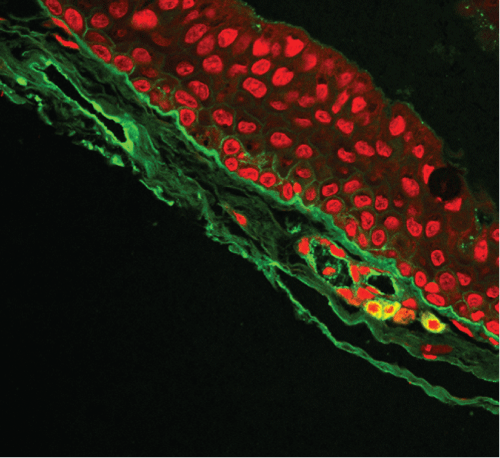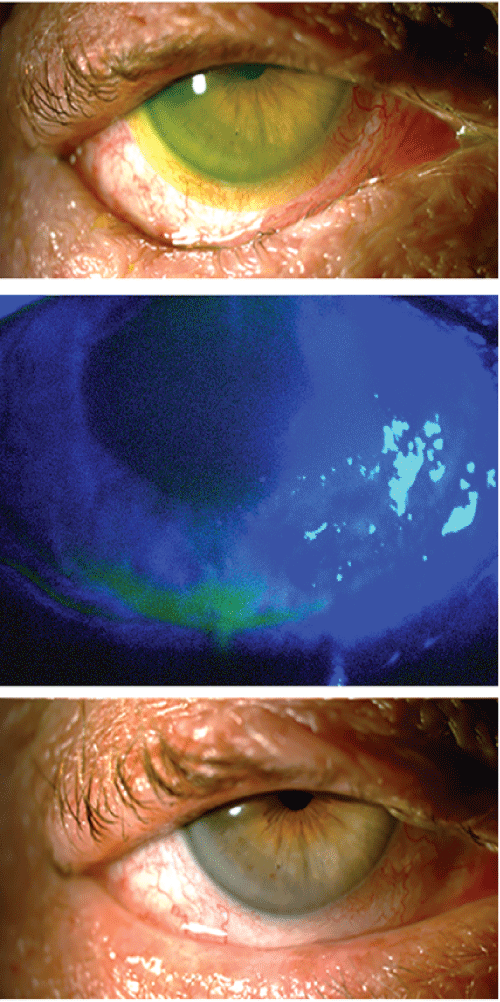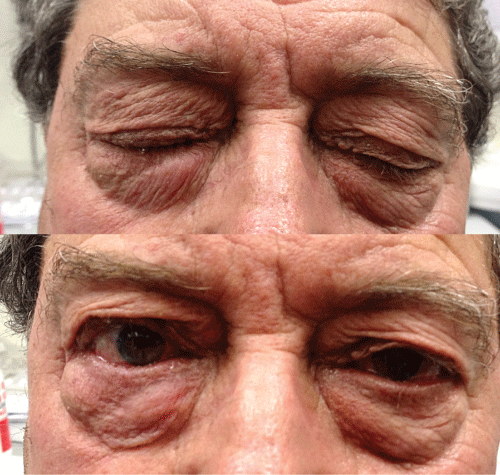International Journal of Ophthalmology and Clinical Research
Surgical Management of Concomitant Ptosis and Cicatricial Entropion in a Patient with Ocular Cicatricial Pemphigoid
Scuderi G1, Mutolo MG1, Lambiase A2* and Recupero SM1
1Ophthalmology Unit, NESMOS Department, Sant'Andrea Hospital, "Sapienza" University of Rome, Italy
2Department of Sense Organs, Section of Ophthalmology, "Sapienza" University of Rome, Italy
*Corresponding author: Alessandro Lambiase, MD, PhD, Professor of Ophthalmology, Department of Sense Organs, Section of Ophthalmology, "Sapienza" University of Rome, Viale del Policlinico 155, 00161 Rome, Italy, Tel: +39 0649975357, Fax: +39 0649975304, E-mail: alessandro.lambiase@uniroma1.it
Int J Ophthalmol Clin Res, IJOCR-2-032, (Volume 2, Issue 4), Case Report; ISSN: 2378-346X
Received: June 24, 2015 | Accepted: August 18, 2015 | Published: August 22, 2015
Citation: Scuderi G, Mutolo MG, Lambiase A, Recupero SM (2015) Surgical Management of Concomitant Ptosis and Cicatricial Entropion in a Patient with Ocular Cicatricial Pemphigoid. Int J Ophthalmol Clin Res 2:032. 10.23937/2378-346X/1410032
Copyright: © 2015 Scuderi G, et al. This is an open-access article distributed under the terms of the Creative Commons Attribution License, which permits unrestricted use, distribution, and reproduction in any medium, provided the original author and source are credited.
Abstract
Purpose: To report on the surgical management of concurrent ptosis and entropion in a patient with cicatricial pemphigoid.
Case report: A 71 year-old patient presented with vision impairment and pain in the right eye due to entropion associated with trichiasis and mild-ptosis. He had a history of ocular cicatricial pemphigoid together with a lung cancer of the apex of the right lung with pleural involvement. There was a history of central retinal vein occlusion of the left eye. Clinical and orthoptic examination was conducted and a decision was made to perform surgical correction of the entropion followed by correction of ptosis avoiding the conjunctival approach. During surgery global alteration and anomalous anatomical relationships of the eyelid tissues was observed.
Conclusion: In this patient affected by cicatricial ocular pemphigoid, surgery of both entropion and ptosis avoiding the conjunctiva approach, associated with good medical management of the immune reaction, and resulted in good esthetic and functional outcome without undesirable complications.
Keywords
Cicatricial pemphigoid, Entropion, Ptosis, Eyelid surgery
Introduction
Ocular cicatricial pemphigoid (OCP) is one of the subsets of mucous membrane pemphigoid (MMP), a group of systemic autoimmune diseases characterized by T-lymphocyte dysregulation, the production of circulating autoantibodies directed against a variety of adhesion molecules in the hemidesmosome-epithelial membrane complex, and the production of proinflammatory cytokines and immune system activation markers [1]. Cicatricial pemphigoid can affect the skin and other mucous membranes (eg, oral mucosa, pharynx, larynx, trachea, esophagus, vagina, urethra, anus), in addition to its hallmark feature, chronic cicatrizing conjunctivitis [1]. Diagnosis of OCP is based on clinical presentation and immunohistochemical studies of the conjunctiva [2]. The characteristic feature of OCP is progressive shrinkage of the conjunctiva [3]. Trichiasis is usually due to cicatricial entropion and is a major cause of ocular morbidity. Unfortunately in OCP, direct surgery on the conjunctiva often results in marked inflammation and cicatrisation. Therefore procedures to correct cicatricial entropion of the lower lid and upper lid ptosis were chosen in order to avoid a surgical approach to the conjunctiva.
Case Report
A 71 year-old man was admitted to our department with vision impairment and pain in the right eye due to spastic recurrent entropion of the lower lid with trichiasis, which had become chronic in the last two months. Ipsilateral ptosis was also present. The patient had a clinical history of OCP confirmed by direct immunofluorescence (Figure 1). He was in therapy with oral methotrexate 10mg daily plus hydrocortisone drops twice a day. Moreover, he had a clinical history of cancer of the apex of the right lung diagnosed and treated 10 years previously. On the left eye he had a history of central retinal vein occlusion (CRVO).

.
Figure 1: Diagnosis of ocular cicatricial pemphigoid was confirmed by direct immunofluorescence showing a typical linear staining (green) with IgA in the epithelial basement membrane zone. The cell nuclei were stained with propidium iodide (red).
View Figure 1
Ophthalmic examination showed best spectacle-corrected visual acuity was 20/20 in the right eye and 20/200 in the left eye. Both eyes presented dermatochalasis and the right eye presented upper lid ptosis and inversion of the lower lid with trichiasis (Figure 2). An elevated eyelid crease, superior sulcus deformity and arched eyebrow were also detected. No relative afferent pupillary defect (RAPD) was present, extraocular motility was normal and the Bell's phenomenon adequate. In the right eye, margin reflex distance 1 (MRD1), which is the distance from the upper eyelid to the corneal light reflex, was 1mm and MRD2, which is the distance from the corneal light reflex to the lower eyelid, was 6mm while in the left eye MRD1 and MRD2 were respectively 4mm and 5mm. The palpebral fissure was 5mm for the right and 10mm for the left eye. Levator function was fair in the right eye (5mm) and good in the left eye (7mm). At palpation of the eyelid and anterior orbit no mass lesion or scar was detectable. At slit lamp examination, inferior corneal defects were detected with punctate fluorescein staining in the right eye (Figure 2). No anomalies were present on the left cornea. On the tarsal conjunctiva slight scars were identified in the fornix of both eyes. Bulbar conjunctiva was normal in both eyes. No other anterior segment alterations were observed, including changes in pupil size and altered pupil dilation. The lens was transparent in both eyes. The fundus oculi was normal in the right eye whereas clinical sign of previous central retinal vein occlusion was detectable in the left eye.

.
Figure 2: Patient shows ptosis and lower lid entropion (top) associated with corneal epithelial defect (middle). One month after entropion repair (botton).
View Figure 2
The anterior approach was chosen for both entropion and ptosis correction in order to avoid surgery to the conjunctiva [4,5]. Entropion was repaired with the LMRE technique. After sterile preparation and subcutaneous and subconjunctival injection of local anesthetic, an intermarginal incision was performed to separate the anterior lamella (skin-muscle lamella) from the posterior lamella (tarso-conjunctival lamella). A second incision was made 3-4mm inferiorly to the eyelid margin from the punctum medially to extend beyond the lateral canthus. A third curve incision was performed at 4 to 5mm in the central point from the extremities of the previous surgical cut. A small crescent of skin within the two incisions was excised. The orbicularis muscle was exposed and the pretarsal fibers under the lash line were fully removed. Then the skin-muscle complex was dissected inferiorly and the flap was kept in a normal position. The skin incision was closed with 6.0 silk sutures. After 1 week the sutures were removed, the lower lid was in the physiological position (Figure 2) and no fluorescein corneal staining was detected at slit lamp examination. One month later ptosis correction with the Holmstrom technique was performed based on the levator aponeurosis-Muller's muscle complex readaptation [5]. Frontalis sling was not considered because of the degree of ptosis and levator muscle residual function [6]. After marking a horizontal line along the upper skin crease close to the lateral canthal commissure and about 6 to 7 mm from the upper eyelid margin, a local infiltration of anesthetic with carbocaine 1% was performed under the skin and, posteriorly, under the conjunctiva (this helps to hydro-dissect conjunctiva from Muller's muscle). An incision was performed and a small ellipse of skin and orbicularis muscle was excised approximately 8mm from the eyelid margin, depending on the presence of excess skin/tissue, to achieve a better cosmetic result. Orbicularis muscle was then dissected off the anterior aspect of the tarsus and the levator aponeurosis was incised 2mm above the superior border of the tarsal plate down to the conjunctiva. Three traction sutures were then placed at the inferior edge of the incised aponeurosis and a plane was developed just above the conjunctiva, dissecting it from the posterior aspect of Muller's muscle up to the upper fornix. The anterior aspect of the levator aponeurosis was dissected from the orbicularis muscle and from the septum expansions. The levator aponeurosis-Muller's muscle complex was then reinserted into the anterior aspect of the tarsal plate with three nylon 6.0 horizontal mattress stitches. The stitch insertion level was approximately twice the degree of ptosis up into the complex and was equal to the degree of ptosis down into the anterior aspect of the tarsus. Since the levator function was poor, in this case the stitches were placed 5mm into the complex and 2mm on the tarsal plate. The skin was then closed with 6.0 silk sutures. After 7 days from surgery the sutures were removed and an optimal static and dynamic function of the eyelids was observed, as shown in figure 3.
The patient was under treatment with oral methotrexate and topical steroid and did not show any relapse of ocular inflammation or eyelid ptosis/entropion at one year of follow-up.
Discussion
The most common ocular findings in OCP, in accordance with the previous literature [7], are conjunctivitis and blepharitis, manifesting with symptoms of ocular irritation, tearing and foreign body sensation. In a minority of cases the disease progresses with blisters and erosion of the bulbar/palpebral conjunctiva or of the eyelid margin. Only a few patients show extensive involvement of the eyelid skin. Our patient had palpebral changes, most likely, due to both to the autoimmune pathology and aging. The ptosis could also be suspected related to a Horner's Syndrome, however no altered pupil size or pupil dilation was observed. During surgery global alteration and anomalous anatomical relationships of the eyelid tissues such as marked thinning of the levator aponeurosis and Müller's muscle complex and, posteriorly, its tight adherences with the conjunctiva were observed. Dissection of this anatomical plane was highly laborious. The contemporary presence of cicatricial ocular pemphigoid and the aponeurotic origin of the ptosis made it difficult to understand the pathogenesis of the alterations found in the eyelid tissues. In this case the transcutaneous approach for both entropion and ptosis surgery with advancement of the levator aponeurosis and Müller's muscle (levator resection), was anatomically and pathophysiologically more appropriate than other techniques. The conjunctival approach was not performed in order to avoid any possible worsening of the conjunctival pathology. Good esthetic and functional results were obtained (Figure 3) and undesirable complications such as lagopthalmos, lid lag and corneal ulcerations were avoided. Then, last but certainly not least; this kind of surgery permits the surgeon to adjust the sutures in the early postoperative days by tightening or loosening the stitches on the tarsus where necessary. In our case no surgery to reposition the levator aponeurosis was required in the postoperative days.
The manifestations of involutional ptosis may change OCP, therefore, a correct surgical procedure associated with good medical management of the immune response in these patients is mandatory in order to guarantee improvement of eyelid cicatricial ptosis and entropion.
References
-
Kirzhner M, Jakobiec FA (2011) Ocular cicatricial pemphigoid: a review of clinical features, immunopathology, differential diagnosis, and current management. Semin Ophthalmol 26: 270-277.
-
Foster CS (1986) Cicatricial pemphigoid. Trans Am Ophthalmol Soc 84: 527-663.
-
Nguyen QD, Foster CS (1996) Cicatricial pemphigoid: diagnosis and treatment. Int Ophthalmol Clin 36: 41-60.
-
Mondino BJ, Brown SI (1981) Ocular cicatricial pemphigoid. Ophthalmology 88: 95-100.
-
Elder MJ, Collin R (1996) Anterior lamellar repositioning and grey line split for upper lid entropion in ocular cicatricial pemphigoid. Eye (Lond) 10: 439-442.
-
Scuderi N, Chiummariello S, De Gado F, Alfano C, Scuderi G, et al. (2008) Surgical correction of blepharoptosis using the levator aponeurosis-Müller's muscle complex readaptation technique: a 15-year experience. Plast Reconstr Surg 121: 71-78.
-
Gabrieli CB, Recupero SM, Contestabile MT, Pacella E, Abdolrahimzadeh S (1996) Fox's modified technique using the Mersilene mesh sling in the management of blepharoptosis. Ophthalmic Surg Lasers 27: 924-928.






